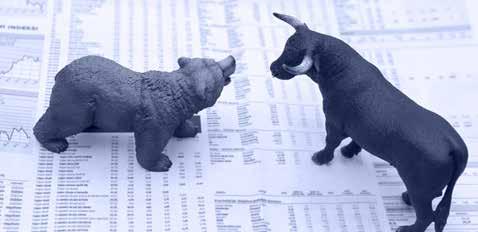
3 minute read
financing the dream
Financial Health Check
Evaluating your portfolio in uncertain times
By Cameron Carr
ASSESSING THE COMING year in times of uncertainty can be tough. Right now, there seems to be an ever-present stream of changing or conflicting information, especially in the financial market. Inflation, supply chain and infrastructure have become just a few of the buzz phrases highlighting that conversation.
“There are just so many things going on right now,” says Ryan Bibler, managing director – investments for Bibler Finney Panfil Private Wealth Management Group of Wells Fargo Advisors. “Unfortunately, in our business, one thing’s always tied to another.”
Bibler emphasizes that these variables aren’t operating independently of one another. Continued supply chain issues, for example, decrease the amount of product available to consumers, which, in turn, drives up prices. Many of these issues, Bibler says, circle back to the beginning of the pandemic, when businesses decreased production. As consumer spending has bounced back faster than some anticipated, inventories haven’t been able to catch up.
All this instability has led to financial anxiety and a common phrase of wisdom: stay put. While this comes from the advisable idea to avoid impulsive decisions, Bibler says remaining stationary isn’t necessarily the best decision given recent inflation.
“If you’re just treading water with cash or you’re saving all your extra funds in cash,” he says, “eventually you’re going to drown.”
Bibler says it’s especially valuable to work with or check in with advisors now to assess a portfolio. While much of the news may point toward uncertainty, a recession isn’t new and an understanding of history and current trends can help one make informed decisions. Adjusting Investments
A common misunderstanding is the significance of actions by the Federal Reserve. Joseph Panfil, managing director – investments for Bibler Finney Panfil, says that while some have seen the Fed’s slowing of bond purchases, which puts money back into the economy, as a reversal of support for the financial recovery, it’s more accurate to describe that as continued but tapering support.
“They’re just slowing it down,” he says. “That signals that we’re going from the beginning of the market cycle to the middle of the market cycle.”
When the Fed reverses course, bond buying will be replaced by bond selling. Still, the tapering can be an early sign of what’s to come in 2022. The last time the Fed tapered, Panfil says, was 2013. The stock market went up and bonds went down.
Investors can make anticipatory moves for a future scenario in that vein.
“They might want to avoid having any very long-term bonds in their portfolio,” Panfil says. “I believe reducing their duration would be a prudent risk management step at this point.”
As the market continues to move into the next phase of the cycle, stocks may become increasingly practical choices. Particularly in times of inflation, wise stock market investments can result in higher returns.
One simple way of considering smart investments would be to look at businesses that are doing well.
“If you’re going to pay more at the pump, one way to combat that is to invest in energy stocks,” says Vincent Finney, managing director – investments for Bibler Finney Panfil.
Finney points out that near the end of 2021, according to Wells Fargo Advisors Advice & Research, energy stocks were up more than 50% year to date. Bibler Finney Panfil forecasts the stocks staying in a similarly high range for the time being.
Likewise, the group anticipates that inflation, while decreasing some in the coming year, will stay at a relatively high 4 percent. Because of that, the group favors investments in stable stocks that have the ability to pay, and even raise, dividends.
Looking at the current market, Finney says other strong points may be banks or financial institutions, which can charge more for loans to increase profits, and industrial and material sectors. That latter group is likely to benefit from the $1 trillion infrastructure bill passed at the end of 2021. That legislation indicates a coming influx of spending in related industries.





